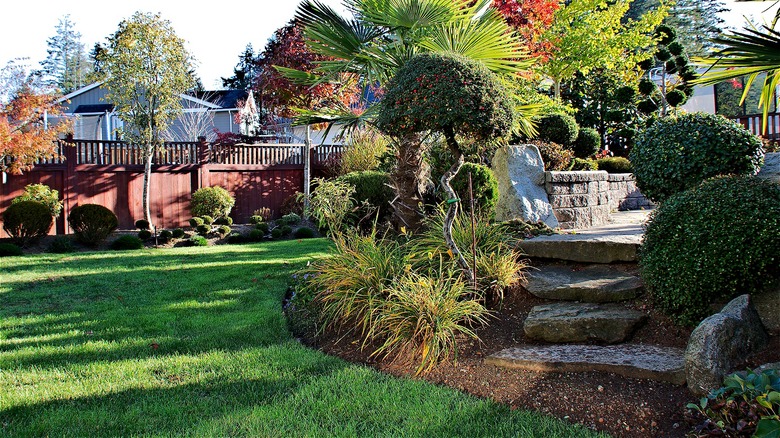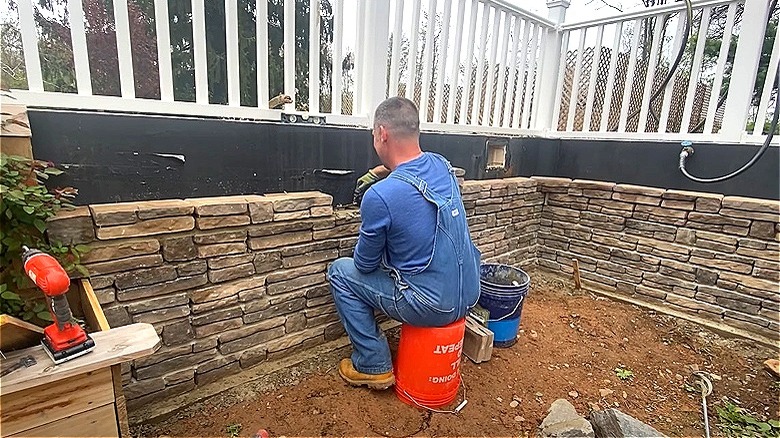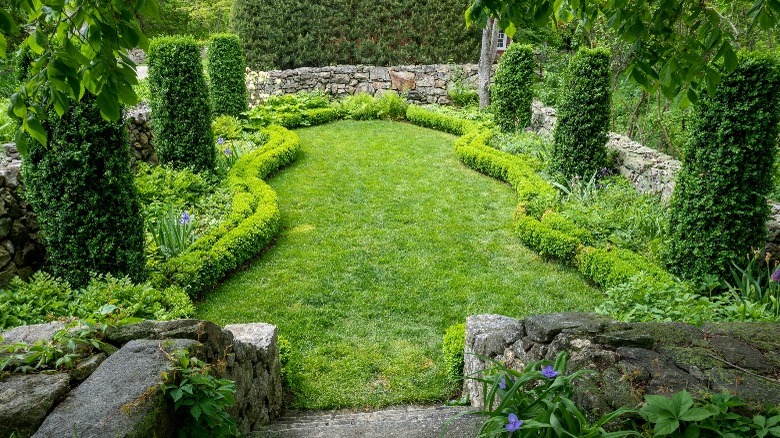What Is A Sunken Garden, And Why You Need One In Your Backyard
Doesn't finding the perfect blend of serenity and beauty amid our hectic lives seem daunting? But what if the oasis you desire is just a few steps from your backdoor, yearning for a bit of your intervention? Behold the sunken garden, a creative alternative to raised garden beds and traditional landscaping. Picture an outdoor sanctuary sitting below the level of its surrounding terrain, brimming with vibrant greenery and enclosed by clay, bricks, or timber walls. This concept isn't just striking. It's also a clever water-conservation strategy.
Sunken gardens can take on various shapes and sizes to match varying preferences and available space. The choices are plenty, from a modest, lowered flower bed to a grand-scale garden enclosed by a retaining wall. Sticking to straight, clean edges can accentuate the modernity of your space while winding edges lend a touch of sophisticated charm.
So, what's the point of a sunken garden? Excelling at maximizing water collection and absorption, this enclave become a sheltering haven for your green companions against the bites of drought. Building a conventional one is generally straightforward, albeit it requires some digging and soil amendment — a minor trade-off for your plants' well-being and backyard's aesthetics. However, a sunken garden's potential extends beyond plant life; it can be configured to a sunken patio, perfect for lounging and entertaining in a cozy, secluded atmosphere.
Getting the most out of sunken garden beds and patios
Sunken gardens can vary in size, contingent on the local weather conditions — sizable for rainy areas to prevent plant drowning and a smaller, more intimate design for drier regions. Building one for crops mirrors setting up a standard garden; the only difference is the soil is below ground level. First, excavate 4 to 8 inches of topsoil or deeper for select crops. Erect a support wall using timber or bricks (depending on your preference and budget), then amend the dug-up topsoil with compost or other organic matter before returning it to the hole. Your sunken garden is now primed for planting.
You can try waffle gardening, a technique native to the Zuni people of western New Mexico. This method divides sunken gardens into square grids, each enclosed by raised soil barriers for maximum water retention. Got an old, in-ground pool? You can transform it into a sunken garden by filling it to three-quarters capacity with a dirt-gravel blend, topping it with quality planting soil and a layer of topsoil or compost mix. Hydrate thoroughly and let the water infiltrate the ground for a few days before planting.
When building a sunken recreational space, pay special attention to the drainage. French drains and waterproofing the earth-retaining walls excel in preventing watery disasters. Once set, embellish your backyard retreat with a fire pit, water feature, cozy seating, or outdoor cooking space, complete with potted plants or greenery along the edges.
Why consider a sunken garden for your backyard?
The allure of a sunken garden in a backyard lies in its ability to create a distinct microclimate. Shielded from the bracing wind and retaining heat effectively, it becomes a paradise for plants that usually wouldn't prosper in a regular outdoor garden. Water conservation takes center stage here, too, with less irrigation needed in the arid regions. And, by preventing runoff, the microcosm in your backyard keeps nutrient leaching minimal, maintaining a rich, fertile foundation that facilitates healthier plant growth. The cherry on top? The garden's lower level offers a cooler environment for your green companions. But again, don't overlook the contribution of mulching in reducing water loss and keeping temperatures around plants consistent.
Switching our focus to aesthetics, a meticulously built sunken garden establishes a sense of depth and structure, delivering dramatic, multilayered drama that visually captivates. Imagine hosting a summer soirée in your yard, with guests in awe of your garden's theatrical charm. Your masterpiece becomes a canvas where you can play with diverse plant colors, heights, and patterns. That could end up attracting pollinators, subsequently establishing a thriving ecosystem. But this under-level spectacle isn't just a feast for your eyes. It also guarantees privacy. Picture a recessed patio garden that promises a more intimate enclave than a typical outdoor lounge, becoming a sanctuary for relaxation or quiet conversations. So, what's keeping you from transforming that bland backyard into an alluring oasis?


